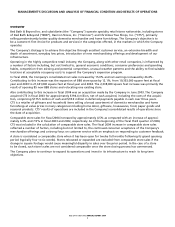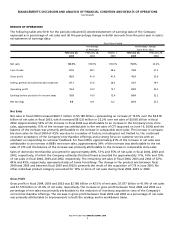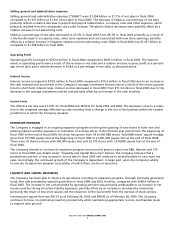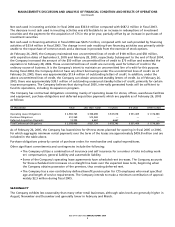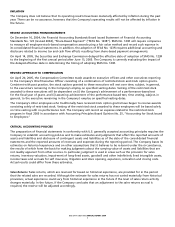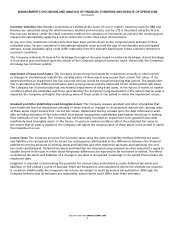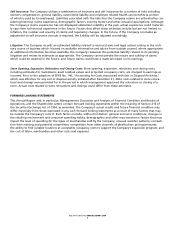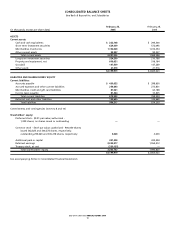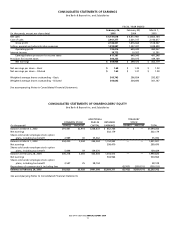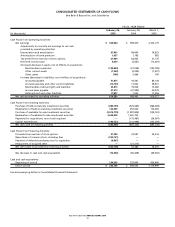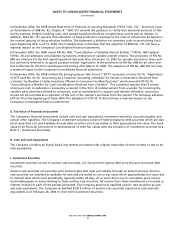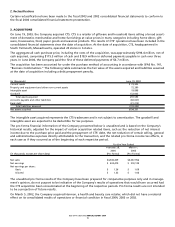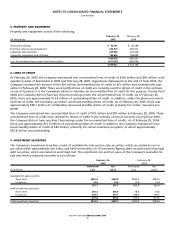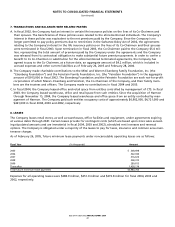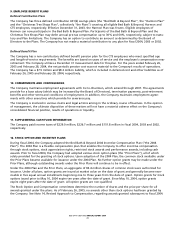Bed, Bath and Beyond 2004 Annual Report Download - page 15
Download and view the complete annual report
Please find page 15 of the 2004 Bed, Bath and Beyond annual report below. You can navigate through the pages in the report by either clicking on the pages listed below, or by using the keyword search tool below to find specific information within the annual report.
BED BATH & BEYOND ANNUAL REPORT 2004
13
1. SUMMARY OF SIGNIFICANT ACCOUNTING POLICIES AND RELATED MATTERS
A. Nature of Operations
Bed Bath & Beyond Inc. and subsidiaries (the “Company”) operate specialty retail stores nationwide, including stores
of Bed Bath & Beyond (“BBB”), Harmon Stores, Inc. (“Harmon”) and Christmas Tree Shops, Inc. (“CTS”) primarily sell-
ing predominantly better quality domestics merchandise and home furnishings. As the Company operates in the
retail industry, its results of operations are affected by general economic conditions and consumer spending habits.
B. Principles of Consolidation
The accompanying consolidated financial statements include the accounts of the Company and its subsidiaries, all of
which are wholly owned.
All significant intercompany balances and transactions have been eliminated in consolidation.
C. Fiscal Year
The Company’s fiscal year is comprised of the 52 or 53 week period ending on the Saturday nearest February 28.
Accordingly, fiscal 2004, 2003 and 2002 represented 52 weeks and ended on February 26, 2005, February 28, 2004 and
March 1, 2003, respectively.
D. Segments
The Company accounts for its operations as one operating segment.
E. Use of Estimates
The preparation of financial statements in conformity with U.S. generally accepted accounting principles requires the
Company to establish accounting policies and to make estimates and judgments that affect the reported amounts of
assets and liabilities and disclosure of contingent assets and liabilities as of the date of the consolidated financial
statements and the reported amounts of revenues and expenses during the reporting period. The Company bases its
estimates on historical experience and on other assumptions that it believes to be relevant under the circumstances,
the results of which form the basis for making judgments about the carrying value of assets and liabilities that are
not readily apparent from other sources. In particular, judgment is used in areas such as the provision for sales
returns, inventory valuation, impairment of long-lived assets, goodwill and other indefinitely lived intangible assets,
vendor allowances, income taxes and accruals for self insurance, litigation and store opening, expansion, relocation
and closing costs. Actual results could differ from these estimates.
F. Recent Accounting Pronouncements
In March 2005, the Financial Accounting Standards Board (“FASB”) issued FASB Interpretation (“FIN”) No. 47,
“Accounting for Conditional Asset Retirement Obligations.” FIN No. 47 clarifies the term “conditional asset retire-
ment obligation” as used in FASB Statement No. 143, “Accounting for Asset Retirement Obligations.” This interpreta-
tion requires companies to recognize a liability for the fair value of a legal obligation to perform asset-retirement
activities that are conditional on a future event if the amount can be reasonably estimated. FIN No. 47 also clarifies
when an entity would have sufficient information to reasonably estimate the fair value of an asset retirement
obligation. FIN No. 47 is effective no later than the end of fiscal years ending after December 15, 2005. The Company
does not believe that the adoption of FIN No. 47 will have a material impact on the Company’s consolidated financial
statements.
NOTES TO CONSOLIDATED FINANCIAL STATEMENTS
Bed Bath & Beyond Inc. and Subsidiaries


